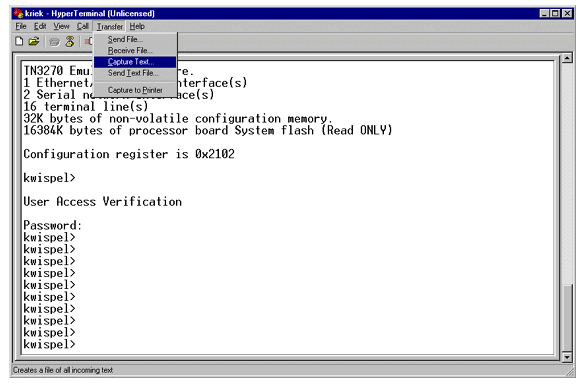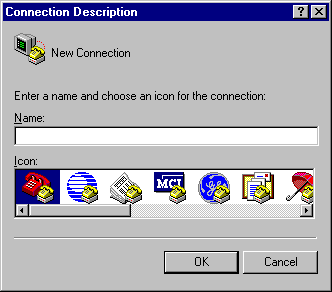

- #HYPERTERMINAL WINDOWS 10 FONT PROBLEM HOW TO#
- #HYPERTERMINAL WINDOWS 10 FONT PROBLEM INSTALL#
- #HYPERTERMINAL WINDOWS 10 FONT PROBLEM FULL#
- #HYPERTERMINAL WINDOWS 10 FONT PROBLEM DOWNLOAD#
the shell to run when spawning a new session (i.e. an array here instead of a color map object including the 6 x 6 color cubes and the grayscale map, just provide Restart your computer and see if the problem is fixed once the next startup is complete. Inside the Font settings menu, click on Restore default font settings button and wait for the operation to complete.
#HYPERTERMINAL WINDOWS 10 FONT PROBLEM FULL#
if you're going to provide the full color palette, From the Fonts screen, click on Font Settings from the vertical menu on the left section of the screen. custom padding (css format, i.e.: `top right bottom left`) custom css to embed in the terminal window custom css to embed in the main window `BEAM` for |, `UNDERLINE` for _, `BLOCK` for █ terminal cursor background color and opacity (hex, rgb, hsl, hsv, hwb or cmyk) default font size in pixels for all tabsįontFamily: '"Fira Code", Menlo, "DejaVu Sans Mono", "Lucida Console", monospace' , Disabling WebGL renderer to make font-ligatures work It is also not maintained anymore, as I switched to Windows Terminal Select Startup and choose the Default profile that you prefer. To change the default profile: Open Windows Terminal and go to the Settings UI window.
#HYPERTERMINAL WINDOWS 10 FONT PROBLEM DOWNLOAD#
Save the contents of the Registry tweak to a REG file, then double-click on it to apply.Īlternatively, you can download the following ready-to-use REG file.// This configuration is meant to be used in WSL v1 for Windows After installation, when you open Windows Terminal, it will start with the PowerShell command line as the default profile in the open tab. To restore defaults for fonts in Windows 10, apply the following Registry tweak: The same action can be done with a Registry tweak. But the 'backscroll buffer', the grey stuff above which shows older text, tends to be. I could not find anything on where GitKraken obtains the available terminals, but on my windows machine, there are multiple options: GitBash, cmd and PowerShell. Theres a white box on the screen that shows my current conversation with El Gadget, and it all looks right. Preferences -> General is the right place to look, the Default Terminal dropdown is where you change the default terminal. The box is spitting out plain ascii text.

Ht is set up in asr-33 tty mode, bog simple. Somethings worked and some did not but I did get Microsoft Bob working So here is my guide to running old versions of Windows on Windows 10 along with a few tips you need to get them working. talking to it direct-connect RS-232, through Hyperterminal. However, I would like to run them using LabVIEW.


They are multiposition valves from VICI, they are connected via RS232 to my PC, and normally these valves are run using HyperTerminal.
#HYPERTERMINAL WINDOWS 10 FONT PROBLEM INSTALL#
#HYPERTERMINAL WINDOWS 10 FONT PROBLEM HOW TO#
If you have customized your font options, here is how to restore them easily. And if a font has multi-color capabilities built into it, then the preview will demonstrate this. The previews use a variety of interesting strings that are selected to match the primary languages that each font family is designed for, together with your own language settings. In Settings, a dedicated page for Fonts settings provides a short preview of each font family. A refresh of the Fonts UI to show off the newer capabilities was long overdue. Instead of the classic applet, recent releases of Windows 10 offer the Fonts page in Settings, which is able to show off newer font capabilities, such as color fonts or variable fonts. You may be familiar with the classic Fonts Control Panel applet, which you could use to see the fonts that are currently installed, or to install or uninstall fonts. The new section, called simply "Fonts", can be found under Personalization. Starting with build 17083, Windows 10 features a special section in the Settings app. OpenType is the more modern format, which can support any writing script, has advanced typographic "layout" features which prescribe positioning and replacement of rendered glyphs. They support scaling and look sharp on modern displays. They either have TTF or OTF file extensions. Windows 10 comes with TrueType fonts and OpenType fonts installed out-of-the-box.


 0 kommentar(er)
0 kommentar(er)
